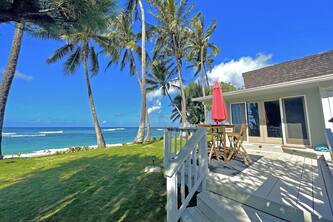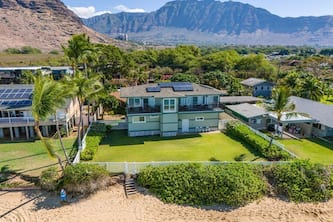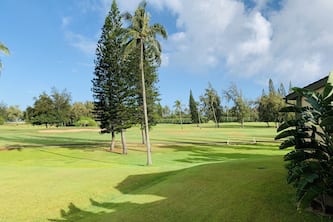Ka Wai a Ha'o

Ka Wai a Ha'o is a sacred spring located in downtown Honolulu on the grounds of Kawaiahao Church. In ancient Hawaii, this spring was reserved exclusively for the ali'i (chiefs), making it a place of high spiritual and social importance. Today, a man-made version honors the original site, featuring a stone from the ancient spring, preserving its cultural legacy.
Ka Wai a Ha'o, Oahu
This sacred spring is located in downtown Honolulu on the grounds of Kawaiahao Church. This is where in the old Hawaii, a spring was located that was reserved for ali'i (high chiefs and chiefesses). It was kapu (taboo) for a commoner to bathe in it. One of these ali'i who regularly came here for ceremonial bathing was chiefess Ha'o. The spring is named after her, Ka Wai a Ha'o, meaning “the water of Ha'o.”
The first missionaries who settled in this area arrived in 1820. The ali'i granted them land near the sacred spring, on which the missionaries built homes. Up until today, some of these homes can be visited at the nearby Mission Houses Museum.
Kawaiahao Church, which is located here as well, was built between 1836 and 1842. Back then it was known as the “Great Stone Church” even though it is not built of stone, but coral blocks that were chiseled by hand out of an Oahu south shore reef.
The actual spring of Ka Wai a Ha'o doesn't exist anymore in its natural state. It used to be located closer to the area where today South King Street and Kapiolani Boulevard intersect. The spring that can be seen today on the church grounds is man-made, built in 1926, but it does feature one of the original stones from the ancient spring of Ka Wai a Ha'o.
Key Features of Ka Wai a Ha'o
- Sacred ali'i bathing site: In ancient Hawaii, the spring was kapu (forbidden) to commoners and used exclusively by high-ranking chiefs like Chiefess Ha'o.
- Name significance: "Ka Wai a Ha'o" means “the water of Ha'o,” honoring a respected chiefess who performed ritual baths here.
- Missionary history: Nearby Mission Houses Museum showcases the early homes of missionaries who settled by the spring in the 1800s.
- Modern commemorative spring: Although the original no longer flows, a 1926 man-made spring features a stone from the original source.
- Located in historic district: Situated near South King Street in Honolulu, adjacent to Kawaiahao Church and across from Honolulu Hale.
Frequently Asked Questions
Why was Ka Wai a Ha'o considered sacred?
The spring was reserved exclusively for ali'i (Hawaiian royalty), making it a spiritually and socially significant site where commoners were forbidden to bathe.
Does the original spring still exist?
No, the original spring no longer flows in its natural form. A commemorative man-made spring was built in 1926 and includes a stone from the original site.
What is the connection to Kawaiahao Church?
Ka Wai a Ha'o is located on the grounds of Kawaiahao Church, a historic structure built from hand-chiseled coral blocks between 1836 and 1842.
Where is Ka Wai a Ha'o located?
It is situated at 957 Punchbowl Street in downtown Honolulu, adjacent to Kawaiahao Church and across from Honolulu Hale.
What does the name “Ka Wai a Ha'o” mean?
It means “the water of Ha'o,” named after Chiefess Ha'o, who used the spring for ceremonial bathing.





















